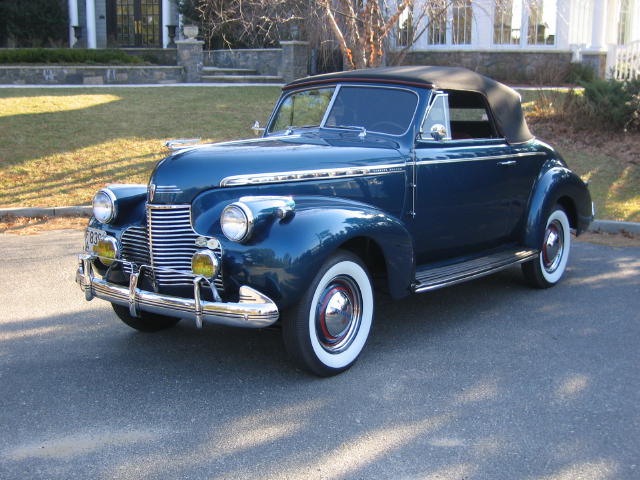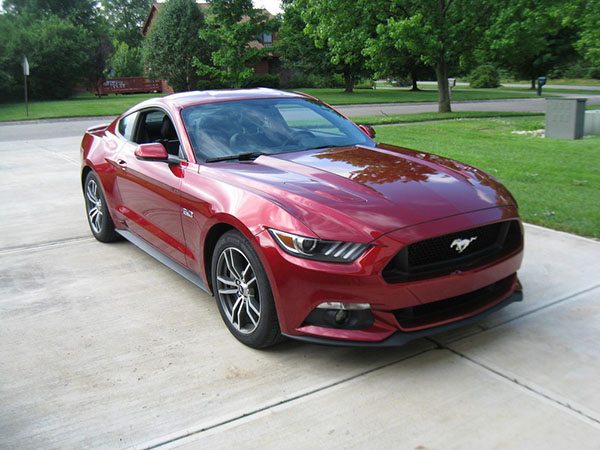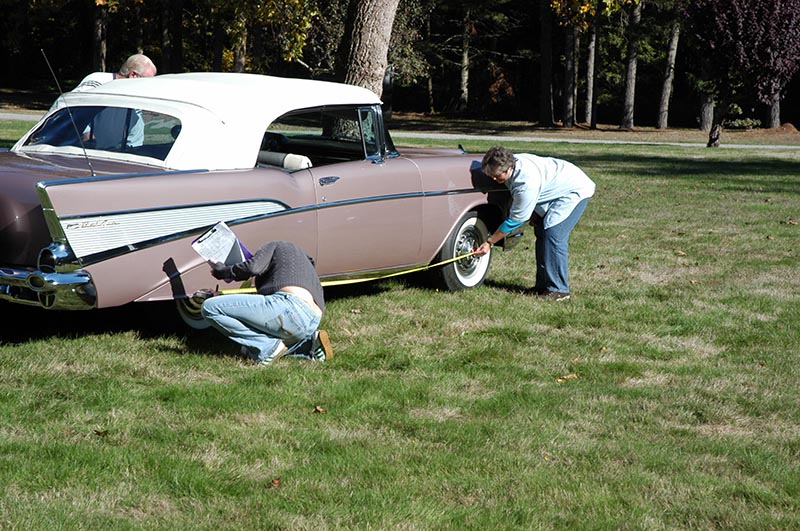
The world of classic car collecting is brimming with history, passion, and a fair share of confusion. Terms like “antique,” “classic,” and “vintage” get thrown around, but what exactly defines these categories? Let’s delve into how age, rarity, demand, and uniqueness help define these categories and explore some examples of cars that fit the bill.
Table of Contents:
Does It Matter?
Before we begin exploring these definitions, let’s ask the question: Does it matter? In this article, we are not attempting to be the ones who define these categories or tell anyone their definition is incorrect. Our goal in this article is to discuss how and why these terms are used and explore some of the vehicles that are good examples.
In some cases, a vehicle must reach a certain age in order to be eligible for “Antique Vehicle Plates.” This is typically the only time a legal definition of “antique vehicle” comes into play. In a state such as Virginia, this is any vehicle over 25 years old. So while a 1999 Dodge Caravan could qualify for an “antique vehicle plate,” it is not what most would consider a collector car. If you want to learn more about state classifications of vintage vehicles, we explore that later in this article.
If you are trying to get your vehicle insured, the classification of whether it is a vintage or collector vehicle may come into play. Collector Cars often need to be insured for more than the ‘on-paper’ amount in order to ensure full coverage of their value. In this case, it’s best to receive an Insurance Appraisal, which considers all factors of the vehicle, including rarity and collectability, in order to determine the most accurate insurance value.
What Factors Contribute?
So why is it that some vehicles become Classic Cars, while others fade into obscurity? While age plays a role, it’s not the sole determinant. Here are a few other factors that have helped make vehicles “stick” throughout history.

Rarity:
Vehicles with a level of Rarity are often more valuable and collectible. This could mean only a few of the vehicles were made or that only a few have survived throughout the years in good condition.
Ford GT40 Mk I (1964-1965): Developed specifically to compete with Ferrari at Le Mans, the GT40 Mk I was a lightweight and powerful race car. Only 31 Mk I models were built, making them incredibly rare and sought after by collectors.
Uniqueness:

Uniqueness can come in many forms, but some collectors prize cars with distinctive design elements. These might be radical, ahead-of-their-time shapes, like the Plymouth Prowler’s hot-rod-inspired curves, or innovative features that turned heads, like the Citroën DS’s “magic carpet” suspension. The thrill of owning a car that embodies a unique design vision or technological innovation is what fuels many collector’s passion for the hunt.
Plymouth Prowler (1997 – 2002)
The Plymouth Prowler was a unique two-seater roadster produced by Plymouth from 1997 to 2002. It was known for its radical, retro design inspired by classic hot rods and muscle cars.

Citroën DS (1955-1998)
The DS broke the mold with its sleek, aerodynamic body and innovative features. Even though the Citroën DS wasn’t a limited production car, its unique design, innovative features, and lasting impact on car design make it a highly sought-after collector’s item.
Historical Significance:
A car’s historical significance can significantly elevate its collectability. These aren’t just machines; they can be rolling time capsules, representing turning points in automotive design, engineering, or cultural impact. Owning a car that played a pivotal role in our automotive journey becomes more than just a possession; it’s a connection to the past.

Ford Model T (1908 – 1927)
The Ford Model T revolutionized transportation. Henry Ford’s vision was to build a car for the “everyman,” which was achieved through the innovation of the assembly line. This dramatically reduced production costs, making the Model T the first affordable car for the middle class. Its impact went beyond mobility; it spurred suburban growth, increased leisure time, and became a symbol of American ingenuity and modernization. For these reasons, the Model T remains a significant car in automotive history and a popular collector’s item.
Demand:
While features like rarity and historical significance can make a car interesting, it’s demand that truly determines its collectability. A classic car that captured the public’s imagination or held a special place in a generation’s heart will see far more interest from collectors.

Ford Mustang(1964-Present)
The Ford Mustang is a prime example. Introduced in 1964, the Mustang’s combination of sporty design, affordability, and powerful V8 engine options captured the imagination of the American public. It became an instant success, selling over a quarter-million units in its first year. This initial popularity, coupled with its enduring appeal as a symbol of American muscle car culture, has made Mustangs from various eras highly sought-after by collectors.
Personal History:
A factor not to be overlooked is each person’s history with a vehicle. Many classic car enthusiasts enter the space through a special connection with one or more cars. It might have been their dad’s special project, their own first car, or that 1999 Dodge Caravan their family took on family vacations. Nearly any car may be considered collectible to the right person and it is those special connections to a vehicle that drives our love of cars in the first place.
Classifications
Now that we have covered some of the factors that come into play with these vehicles, let’s discuss how they come together to create certain classifications.
Antique Cars:
Antique cars are more often associated with the early 1900s and are typically at least 50 years or older. These are rolling pieces of history, representing the early years of automotive innovation. Owning an antique car allows you to experience a time when car design prioritized function and character over aerodynamics and gas mileage, offering a glimpse into the roots of our modern automotive landscape.
Great examples of this include the Model T Ford or the Dodge 30-35.

Dodge 30-35: (1914-1916)
The Dodge 30-35 was the inaugural model produced by the Dodge Brothers, introduced in 1914. This pioneering vehicle featured a 35 horsepower, inline-four engine and a sturdy design that quickly gained popularity. Initially offered as a four-door touring car, a two-door roadster variant joined the lineup the following year. Known for its reliability and affordability, the Dodge 30-35 played a pivotal role in establishing the Dodge Brothers as a major player in the American automotive industry.
Vintage Vehicles:
Vintage vehicles can be tricky to categorize. There’s no universally agreed-upon age range, but it often refers to cars from the 1930s to 1980s. This may also depend on the age of the person discussing “vintage”. We may often consider the vehicles our parents or grandparents drove as “vintage”. So while one person may call a car from 1920 “vintage”, others may call it “antique”.

1957 Chevrolet Bel Air
This iconic car epitomizes the American “dream car” of the 1950s. With its chrome accents, fins, and powerful V8 engine options, the Bel Air offered a stylish and comfortable ride for the whole family. It became a symbol of post-war prosperity and continues to be a popular choice for collectors today.
Classic Cars:
Classic vehicles are defined by the Classic Car Club of America as “fine” or “distinctive” automobiles, generally built between 1915 and 1948.
Other popular classic cars include those considered timeless designs with enduring popularity. Examples of this include American Muscle Cars, such as Mustangs, Corvettes, and Chargers, European Sports Cars such as the Porsche 911 and Ferrari GTO, and Japanese Imports.

Chevrolet Corvette (1953-Present)
Another American icon, the Corvette has been a symbol of innovation and performance since its debut in 1953. Originally designed to compete with European sports cars, the Corvette has undergone numerous design revisions. Its combination of sleek looks, powerful engines, and association with American automotive ingenuity makes various Corvette models highly collectible classic cars.
Collector Cars:
Any vehicle that someone has ‘collected’ could be considered a “collector car”. Collector cars can include classic, vintage, and antique vehicles, as well as luxury, high-performance sports vehicles, and kit cars. However, in the classic car community, collector cars are often vehicles with an additional layer of collectability due to their historical significance, cultural impact, or limited production.

Ferrari 250 GTO (1962-1964)
The Ferrari 250 GTO is the crown jewel of classic car collecting. Built in the early 1960s, this incredibly rare and powerful machine dominated the racing scene, boasting a gorgeous design that remains timeless. Fewer than four dozen were ever produced, and its combination of legendary racing pedigree, stunning looks, and historical significance make it the most valuable car ever sold, reaching staggering prices in auctions. Owning a Ferrari GTO is like owning a piece of automotive royalty.
State-by-State Variations
Definitions for antique, classic, and vintage cars can differ across states. These variations primarily affect registration, titling, and insurance. For example, California classifies all vehicles over 25 years old as “Historical Vehicles,” while some states might offer specific registration benefits for cars exceeding 40 years.
Vintage Plates: A Touch of History
Many states offer “vintage” or antique” plates for qualifying vehicles. These special plates often have a historical design and can enhance the visual appeal of your classic car. Eligibility requirements vary by state, but generally, the car must be a certain age (often aligning with the state’s definition of “antique” or “classic”) and be in good condition. In some states, the use of the vehicle may also be restricted in association with these plates. To learn about obtaining antique or vintage plates in your state, visit your local Department of Motor Vehicles (DMV) website or office. They will have information on eligibility requirements, application procedures, and any necessary fees.
Guidance from the Experts
The Antique Automobile Club of America (AACA) is a valuable resource for enthusiasts of all things pre-1945. They offer various classifications for pre-war cars based on originality, condition, and historical significance. The Classic Car Club of America (CCCA) focuses on American-made cars from 1915 to 1948, with a strict judging system based on originality and preservation. Both clubs offer resources and expertise in car identification, restoration, and collecting.
How We Can Help
At AAG, we specialize in Vintage Vehicle Appraisals for values of vintage, classic, and collector vehicles. If you own a collector vehicle and are unsure of its true value, a Car Appraisal is a useful tool when documenting your vehicle’s value. Understanding your car’s true value can ensure you receive proper insurance coverage and inform you about potential sale value should you decide to sell the vehicle.
The world of vintage vehicles can be rife with misinformation about vehicle values, especially when terms like those discussed here are vague, making it difficult to know how your vehicle should be classified. If you are interested in an accurate value for your vintage, classic, or collector vehicle, contact the experts at AAG! We look forward to your call.







